Watch a drone fly over Camelford Court’s new roof with 98 solar panels producing green electricity
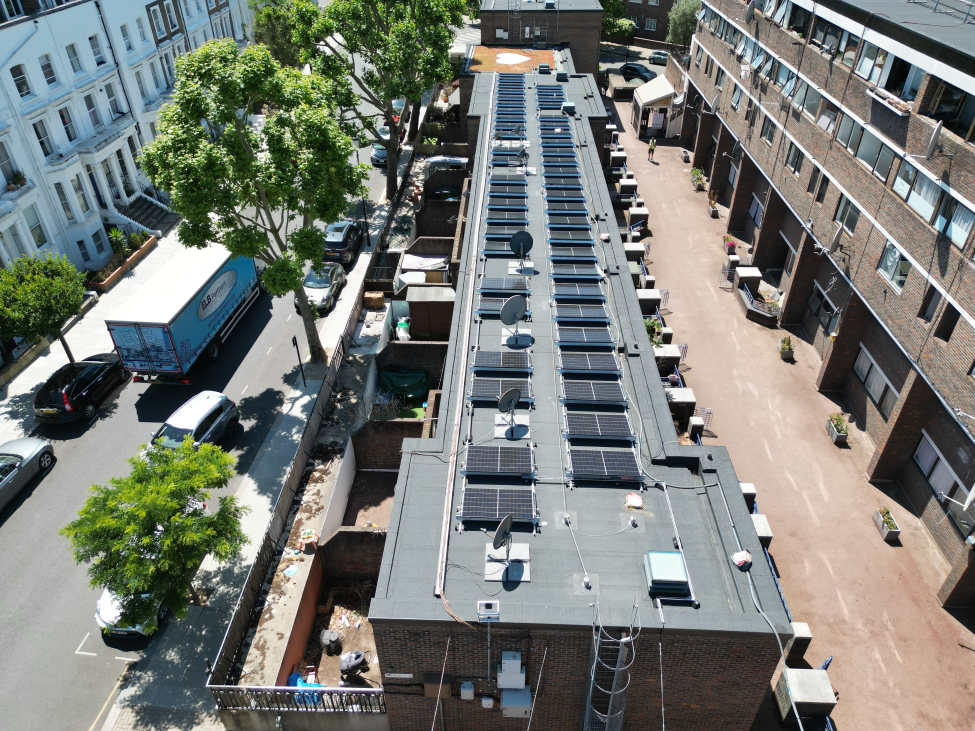
Camelford Court on Lancaster West now has 98 photovoltaic panels in total across the two buildings generating green electricity that will help reduce service charges for residents in the block.
The cost of the energy created will offset the cost of the work to install the roof and be ringfenced to reduce service charges for the electricity used in the communal areas of the building.
The cost of the energy created will offset the cost of the work to install the roof and be ringfenced to reduce service charges for the electricity used in the communal areas of the building.
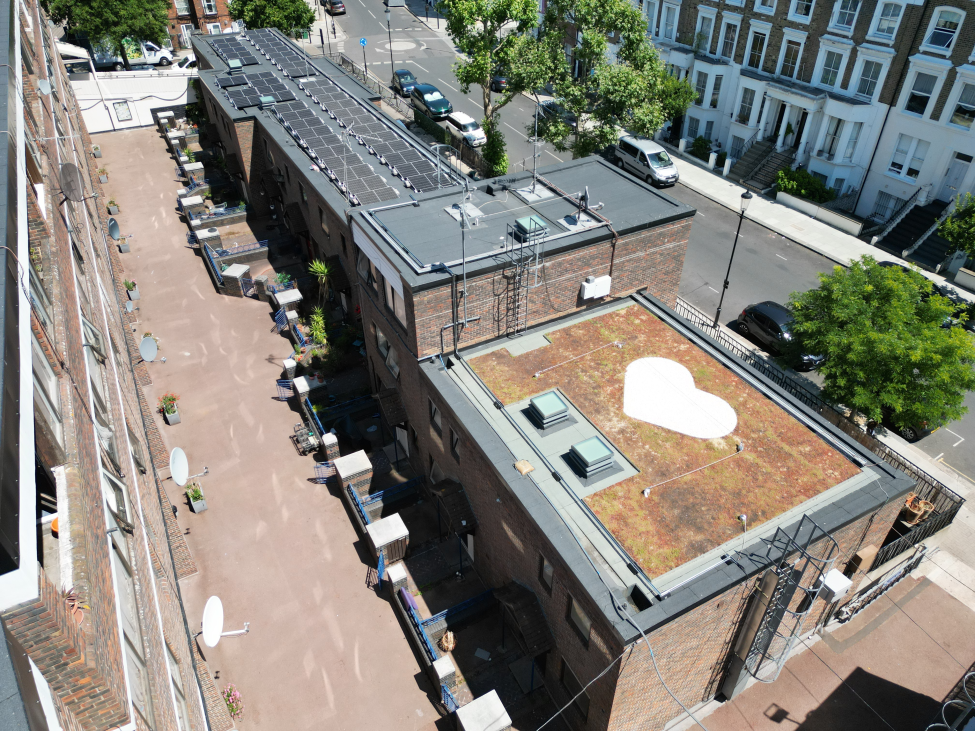
It’s the first block on Lancaster West to get solar PV panels and, we believe, the first Council-owned residential block in the borough to have a bio-solar roof.
It is part of the energy-efficient refurbishment of the whole estate and is also another step towards Lancaster West Neighbourhood Team’s ambition of becoming a carbon-neutral estate by 2030.
It is part of the energy-efficient refurbishment of the whole estate and is also another step towards Lancaster West Neighbourhood Team’s ambition of becoming a carbon-neutral estate by 2030.
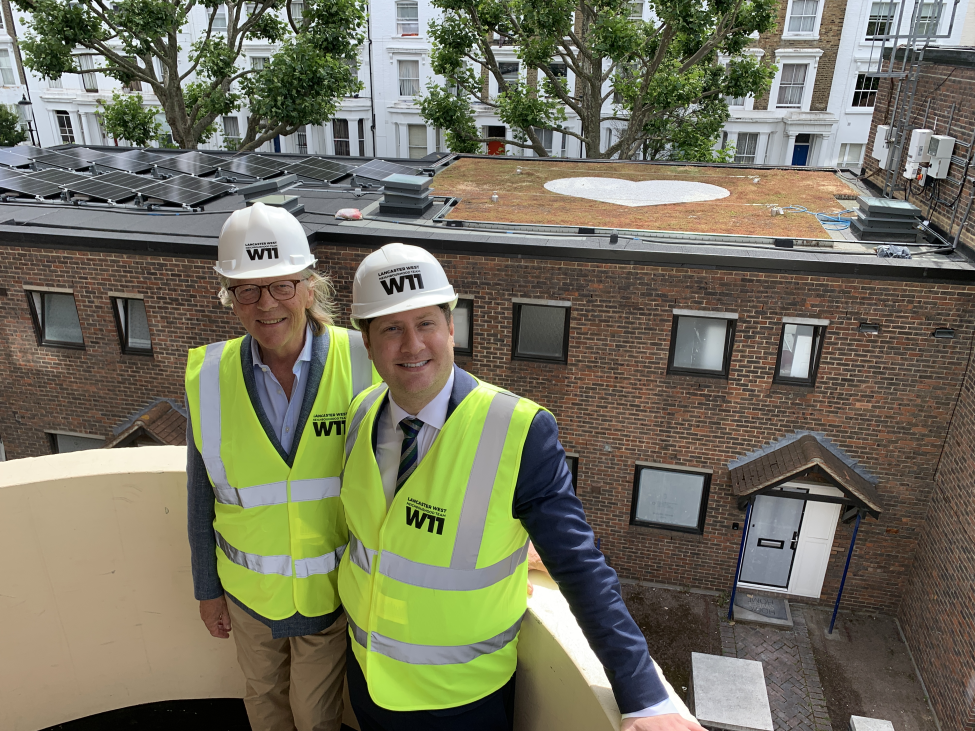
“I’m excited to announce the completion of Lancaster West’s first bio-solar roof. The roof was co-designed with residents who chose solar panels and a green roof with Grenfell heart motifs at either end of the block. The green electricity generated will help reduce service charges for tenants and leaseholders. The new roof is part of an energy efficient refurbishment going on across the estate which puts resident co-design at its heart,” said James Caspell, Director of Lancaster West Neighbourhood Team.
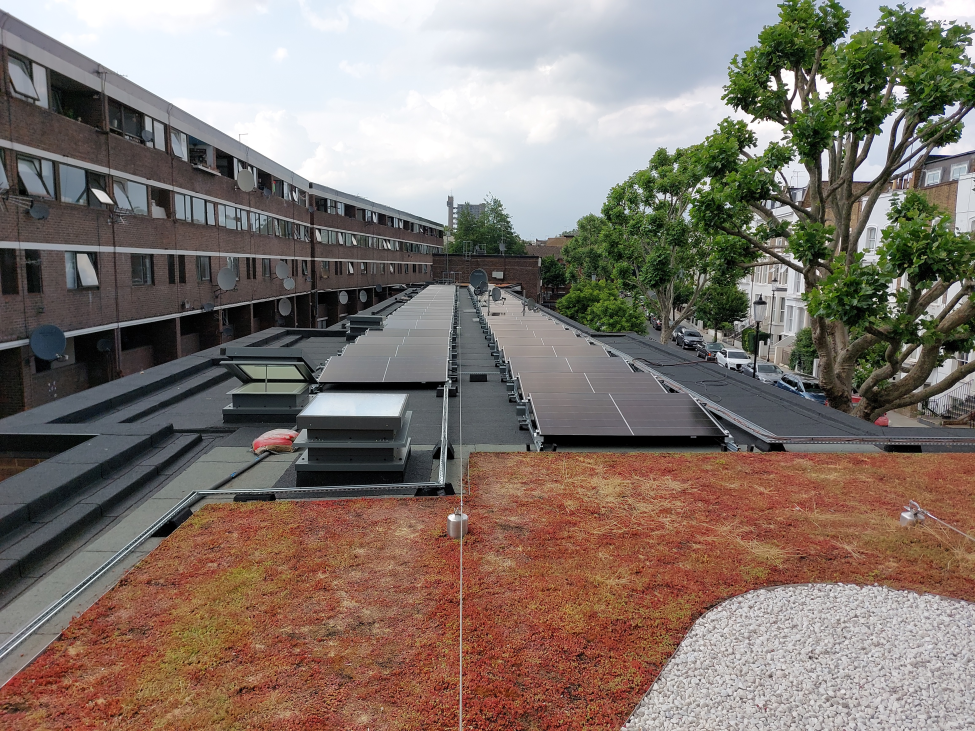
The solar panels were chosen by a majority of Camelford Court households. The final design received 68% of households' overall votes compared to the two other options. This new roof includes approximately 420m2 of solar panels and 190m2 of green roof.
The solar panels were part of phase 2 of the roof works on Camelford Court. Phase 1 of construction involved the installation of new triple-glazed skylights in 13 properties which will increase light and ventilation for residents. The new roof has been made with A1 non-combustible insulation, improving safety as well as energy performance. As the roof has a very low u-value (a measure of thermal performance), it keeps the heat inside homes in winter, and sun’s heat out in the summer. This will help to reduce energy usage and bills for residents.
The solar panels were part of phase 2 of the roof works on Camelford Court. Phase 1 of construction involved the installation of new triple-glazed skylights in 13 properties which will increase light and ventilation for residents. The new roof has been made with A1 non-combustible insulation, improving safety as well as energy performance. As the roof has a very low u-value (a measure of thermal performance), it keeps the heat inside homes in winter, and sun’s heat out in the summer. This will help to reduce energy usage and bills for residents.
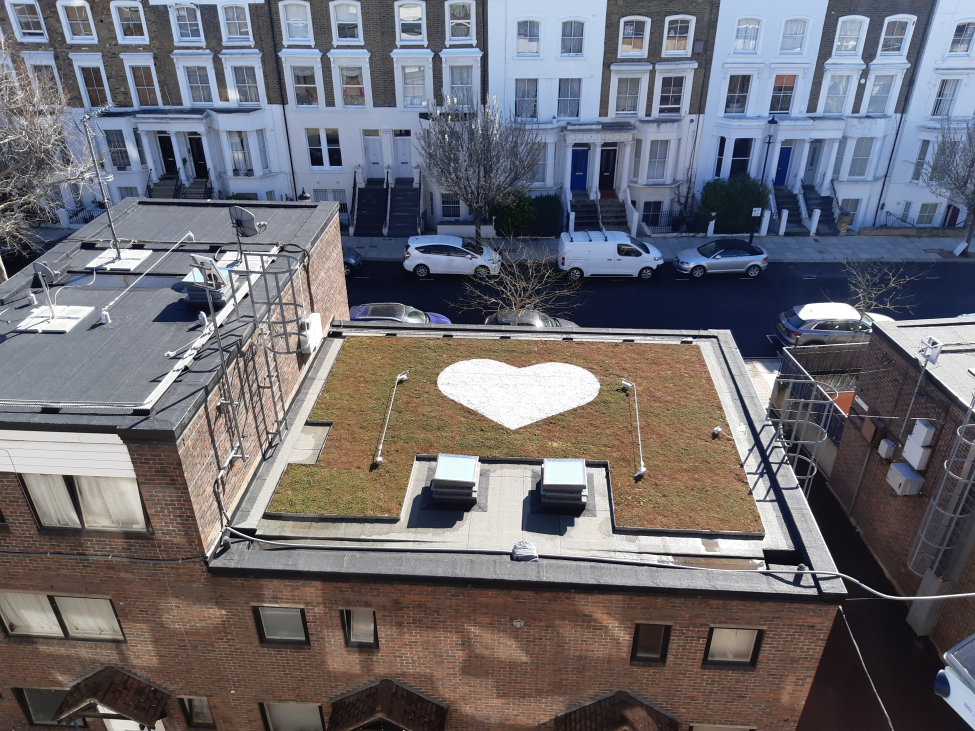
The two sections of sedum planting, surrounding the Grenfell Heart motifs at either end of the roof, are low maintenance, with shallow roots that can withstand hot summers and help to improve the biodiversity of the estate.
These sedum plants will absorb 18kg of carbon-dioxide and almost 1kg of airborne pollutants every year. The solar photovoltaic panels generate green electricity which will help reduce service charges for tenants and leaseholders of Camelford Court.
It will feed into generating power for communal supplies such as lighting, and security systems. The solar panels will save 15,299kg of CO2 from going into the atmosphere every year and the cost of the panels will be paid off in six to eight years.
These sedum plants will absorb 18kg of carbon-dioxide and almost 1kg of airborne pollutants every year. The solar photovoltaic panels generate green electricity which will help reduce service charges for tenants and leaseholders of Camelford Court.
It will feed into generating power for communal supplies such as lighting, and security systems. The solar panels will save 15,299kg of CO2 from going into the atmosphere every year and the cost of the panels will be paid off in six to eight years.

